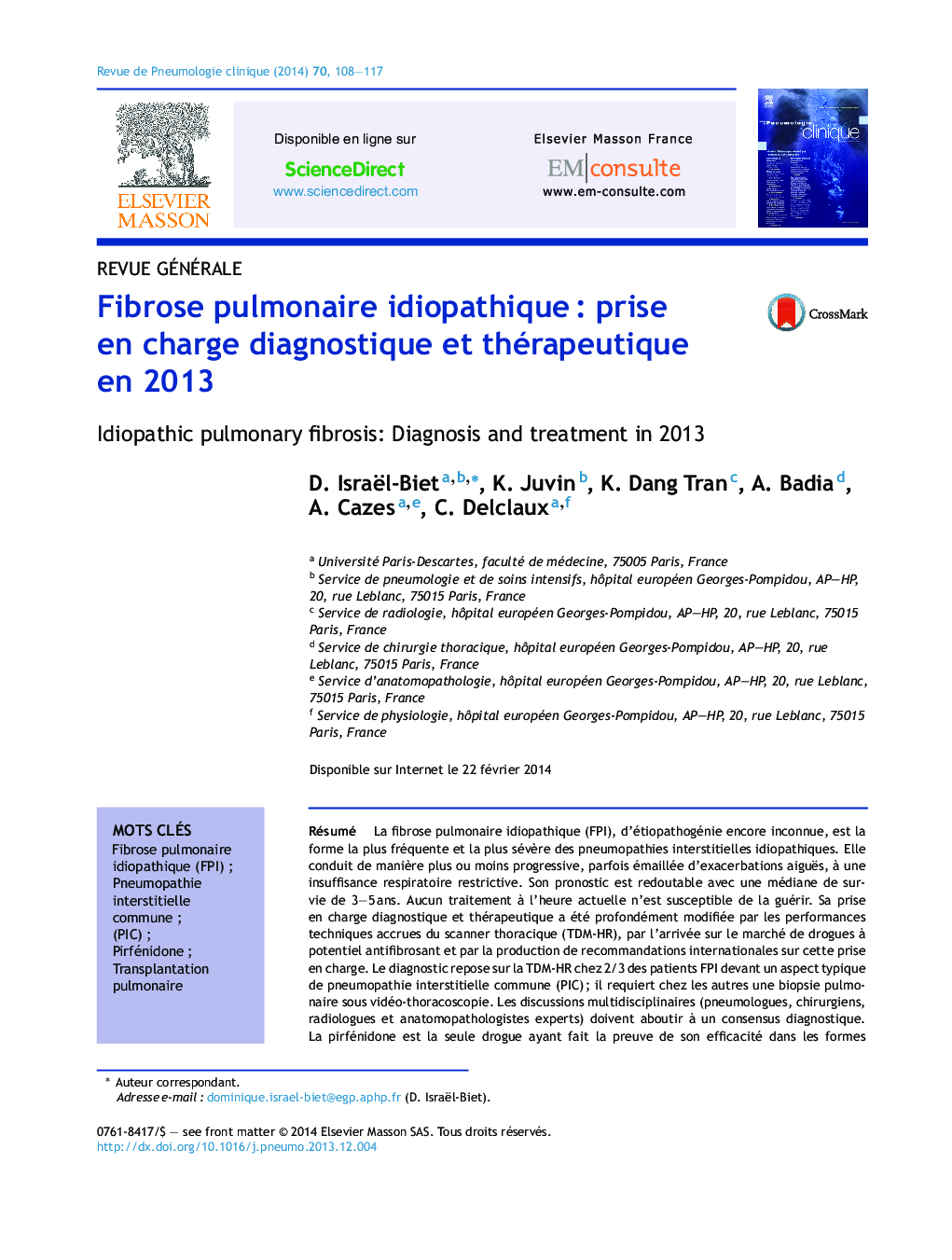| Article ID | Journal | Published Year | Pages | File Type |
|---|---|---|---|---|
| 3419567 | Revue de Pneumologie Clinique | 2014 | 10 Pages |
Abstract
Idiopathic pulmonary fibrosis (IPF), the etiopathogeny of which is still unknown, is the most frequent and severe of idiopathic interstitial pneumonias. It progressively leads, sometimes more acutely when exacerbations occur, to a restrictive respiratory insufficiency. Its prognosis is very dark with a median survival of 3-5 years. No treatment so far has been curative. Its diagnostic and therapeutic management has been greatly improved due to the technical progress in terms of high-resolution tomodensitometry, to the availability of new drugs with a real antifibrotic potential and to the production of international recommendations. The diagnosis is reached in 2/3 of IPF patients presenting with a typical usual interstitial pneumonitis (UIP) CT-scan pattern. It requires a videothoracoscopic biopsy in the remaining patients. Multidisciplinary discussions are key to a proper diagnosis of IPF. Pirfenidone is presently the only drug with a real antifibrotic potential in mild to moderate forms of the disease (FVCÂ >Â 50% and DLCOÂ >Â 35% predicted). The other ones have proved either inefficient or toxic. It is highly recommended to include patients in innovative targeted protocols. Non-pharmacological management of these patients comprises long-term oxygen therapy, pulmonary rehabilitation and overall lung transplantation. Pulmonary hypertension, to be detected regularly during the follow-up, is associated to a dark prognosis. No specific treatment is efficient in this context. Several comorbidities, particularly frequent in IPF, should be treated when present: gastro-oesophageal reflux, obstructive sleep apnea, emphysema. The particular high frequency of bronchopulmonary cancer should be highlighted.
Related Topics
Health Sciences
Medicine and Dentistry
Infectious Diseases
Authors
D. Israël-Biet, K. Juvin, K. Dang Tran, A. Badia, A. Cazes, C. Delclaux,
